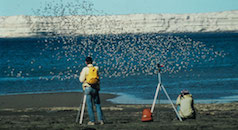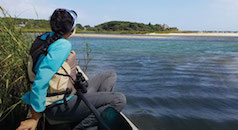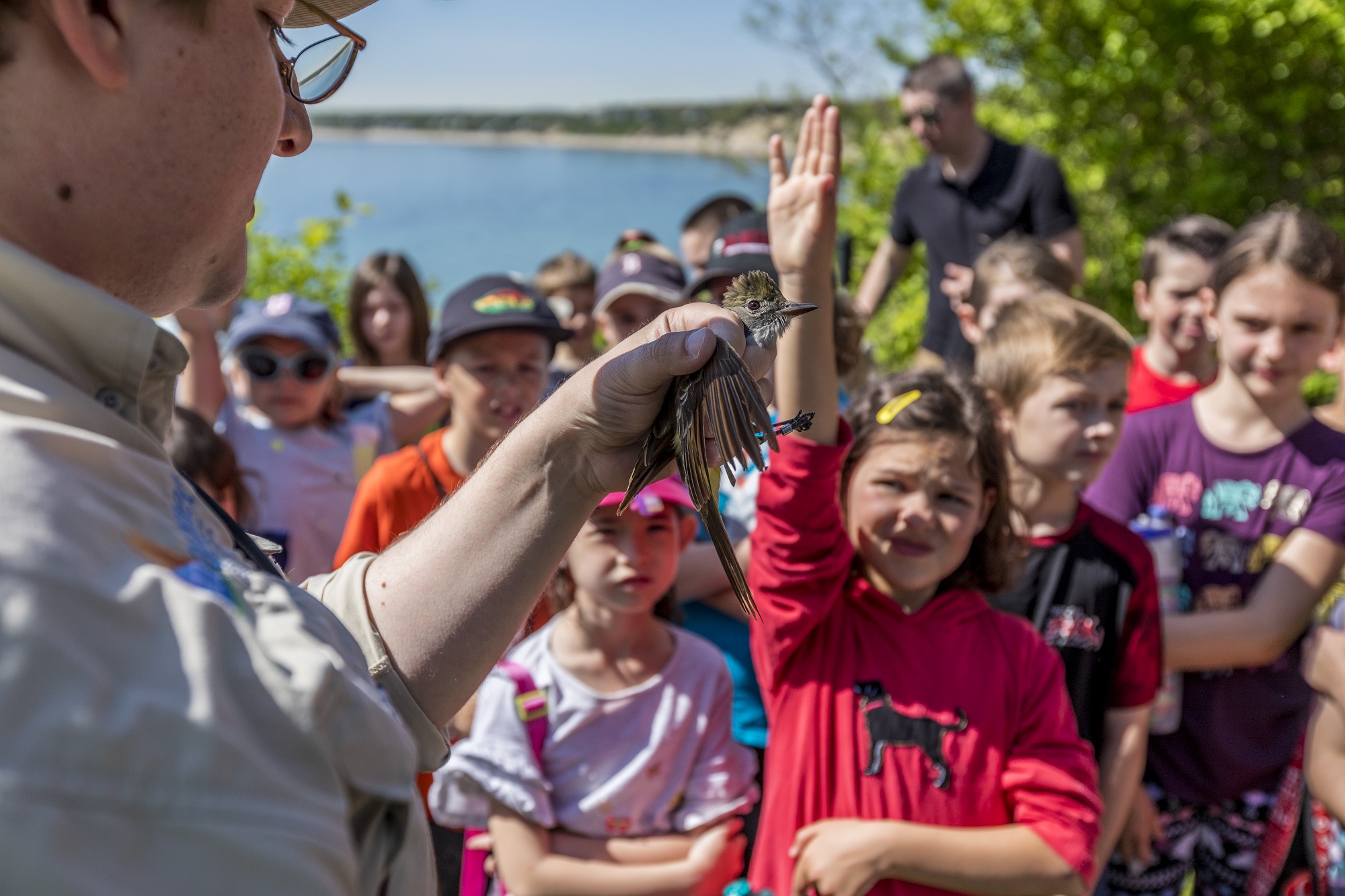Search Results

Fall Field Guide for the Gulf of Maine
Fall is a time of many changes; on land, it’s hard to ignore the changing color of the leaves and cooling temperatures. While the changes happening underwater may not be as visible, if you look close enough, you’ll see that marine organisms go through their own transitions, too. Several species are currently preparing for the harsh winter conditions of the Gulf of Maine and the changing seasonal cues trigger many different types of behavior. If you find yourself in intertidal and shallow subtidal areas of the coast of New England this season, see if you can spot examples of these seasonal marine phenomena. For most shellfish, the growing season is during the warmer months, when there is more food available...
New fish on the block: The expanding range of black sea bass in the Gulf of Maine
The Gulf of Maine is one of the world’s most productive marine ecosystems—the heart of New England’s fishing heritage for over 400 years. Today, the Gulf is one of the fastest warming bodies of water on the planet, leading to big changes in the marine environment and a changing mix of species that survive and thrive. Black Sea Bass – a temperate reef fish once a rarity in these waters – are becoming increasingly abundant. Join Dr. Marissa McMahan, Director of Fisheries, to learn how we are studying sea bass in its newly expanded habitat in order to understand its ecological impacts, as well as support the development of a black sea bass fishery in the Gulf of Maine.
Guide to Applying Science and Management Insights and Human Behavior Change Strategies to Address Beach Walking and Dog Disturbance Along the Atlantic Flyway
Despite many efforts to reduce disturbance, activities that are potentially disturbing to shorebirds are widely present across the United States and Canada portion of the Atlantic Flyway. To mitigate disturbance from two common human disturbances -- dog walking and beach walking -- Virginia Tech, Audubon, Manomet and other AFSI partners developed a new Guide to Applying Science and Management Insights and Human Behavior Change Strategies to Address Beach Walking and Dog Disturbance Along the Atlantic Flyway. The project was funded by National Fish and Wildlife Foundation and the United States Fish and Wildlife Service.
Protecting wintering sites for shorebirds in Chile
The island of Chiloé, in southern Chile, is one of the most important sites for Hudsonian Godwit (Limosa haemastica) and Whimbrel (Numenius phaeopus) in the Western Hemisphere. The eastern wetlands of the island are home to 21,000 Godwits, comprising 27% of the world population and 99% of the Pacific coast population, in addition to a significant proportion of the Pacific coast population of Whimbrel. Both species are classified as "high concern" in the US Shorebird Conservation Plan. Due to its importance for "wintering" populations of Hudsonian Godwit and Whimbrel, Chiloé was selected by the David and Lucile Packard Foundation as a priority site for its portfolio of shorebird conservation projects. Thanks to this support, in 2010, a coalition of local,...
A new season of banding and education – Manomet’s 56th fall banding season
It may not feel like fall in Massachusetts yet, but that won’t stop migratory birds from their long, southbound journeys to their wintering grounds! Manomet’s banding lab opened for the 56th fall season on August 15. We also welcomed our talented banding staff: Megan Gray, a Manomet banding veteran and Rhode Island native with several years of research experience; Sarah Duff, another Manomet veteran, world traveler, and artist from New Jersey; Amy Hogan, a Michigan native returning for her second season at Manomet after spending the summer at our Plymouth campus working on our open science initiative; Lauren Michael, coming to us from Maryland her first season at Manomet after spending several years in various field positions throughout North America....
Whimbrels in the Arctic
Shiloh Schulte, Manomet’s senior shorebird scientist, recently spent four weeks in the Arctic National Wildlife Refuge, continuing several studies delayed by COVID-19. Working closely with the U.S Fish and Wildlife Service, Shiloh deployed GPS tracking tags on Whimbrel, American Golden-Plovers, Pectoral Sandpipers, and other species as part of an ongoing study of local movement patterns and long-distance migration pathways and stopover sites. In addition to the tracking work, Shiloh collaborated to develop methods for remote monitoring of shorebird nests and mentored new USFWS technicians and volunteers. Shiloh recently shared his experiences on Alaska's Katakturuk River tagging Whimbrels to study local movement patterns and long-distance migration pathways and stopover sites. I have been lying flat in the sedge, hiding behind a...
How is climate change impacting food availability for shorebirds?
One of the big questions we are addressing through our research is determining what threats limit shorebird populations. The work of the Arctic Shorebird Demographics Network (ASDN), which included 16 partner organizations, has substantially increased our ability to address a wide variety of science and conservation goals. We co-led the network of partners along with Rick Lanctot from the US Fish and Wildlife Service and Brett Sandercock from Kansas State University. Through this partnership and collaboration, the ASDN has examined species and topics at a very large scale (e.g., Russia to western Canada). The ASDN team has collected data on migratory connectivity, as well as adult survival, productivity, and other demographic parameters at various stages of a shorebird’s annual cycle....
Shifting Tides
For nearly a decade, Anne Hayden’s work at Manomet has focused on restoring marine habitats and rebuilding sustainable fisheries. Throughout her career, Anne’s work has focused on planning and management for Maine’s watersheds, building engaging and inspiring educational programs and courses, restoring marine habitats, and rebuilding sustainable fisheries. Through social and natural science, she has worked to understand the dynamics of the marine ecosystem and align economic incentives with environmental stewardship. In addition, she has worked to restore sustainable and resilient fisheries in the Gulf of Maine and strengthen adaptive co-management to promote healthy marine ecosystems and thriving coastal communities. At the end of June 2021, Anne will be retiring from Manomet, leaving behind a long list of accomplishments and...
Shrimp and Shorebird Conservation
Many thousands of acres of shrimp farms have replaced areas of natural coastal habitat — mostly salt-pan flats and mangrove forests — which are critical areas for shorebirds in Mexico, Central America, and northern South America. As long-distance migrants, shorebirds connect the Arctic with Argentina’s Tierra del Fuego along the Pacific Flyway, and the east coast of the United States to the Pacific coast of Central and South America. On all of these routes, shorebirds face distinct threats that require a coordinated response by different stakeholders throughout the hemisphere who work together to connect conservation with sustainable development. By working with shrimp farmers, we provide significant benefits for shorebirds and other species. Our partners at Quetzalli Nicaragua have been generating...
Setting Standards for Working Landscapes
Shorebirds thrive in habitats like intertidal mudflats, natural salt flats, mangroves, white sand and gravel beaches, marshes, and seasonal freshwater wetlands. A Red Knot, for example, spends its nesting season in northern Canada then migrates south to its wintering grounds, resting at key stopover sites like Cape Cod, Massachusetts, which offers nutrient-dense coastal marshland and beaches. It then heads to the Pacific Ocean, where it finally lands in the Gulf of Fonseca, a rich tidal mudflat bordering El Salvador, Honduras, and Nicaragua. Manomet scientists have found that some of the best shorebird habitat exists within “working landscapes,” areas outside of conservation areas used for farming, forestry or ranching. The Gulf of Fonseca is one of these sites which host sizeable...



